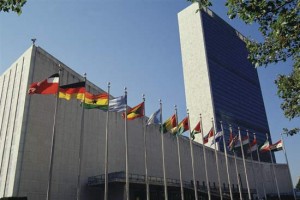 A just-released global study demonstrates that the diseases causing most of the world’s untimely deaths and illness, especially among children, are not receiving proportionate attention within international policy-making institutions.
A just-released global study demonstrates that the diseases causing most of the world’s untimely deaths and illness, especially among children, are not receiving proportionate attention within international policy-making institutions.
According to the 2010 Global Burden of Disease Study (GBD 2010) published in The Lancet medical journal in December, over 1.4 million people died from diarrhea in 2010. Despite a 41.9% drop from 1990 levels, diarrhea remains a leading cause of death, particularly for children. Yet diarrhea does not receive the same attention by the UN as more politically correct issues such as deaths from abortion. The GBD 2010 reported 37,100 deaths from abortion complications, yet advocacy groups promoting access to “safe” abortion are prominent and influential within the UN system and have gained traction by linking abortion to maternal mortality.
Abortion advocates attempted to prevent the Lancet publishing a previous report by GBD author Christopher Murray, which revealed the World Health Organization (WHO) was reporting nearly twice the number of actual global maternal deaths.
That maternal health report had important implications for many United Nations initiatives that relied on the erroneous numbers, as well as the case for their continued funding. The new GBD 2010 reports a further reduction in maternal mortality to 254,700 deaths per year – not a trivial number, but more than five times fewer than those killed by diarrhea.
Dr. Murray, who worked at WHO before starting the GBD project, has taken issue with other statistics generated by his former employer: In February, he and his colleagues reported that malaria caused 1.24 million deaths in 2010, many of them children. This is twice the WHO estimate for the same year.
GBD 2010 was conducted by independent researchers rather than researchers connected to a policymaking institution. Introducing the study, Lancet editor Richard Horton pointed out “the success of the GBD, then and now is that it provides a level playing field to assess independently (and dispassionately) the health priorities that face countries.”
According to a UN source, Dr. Murray became “persona non grata” within some parts of the UN system when he left the WHO to form a competitor organization aimed at challenging WHO data and UN health policy priorities.
While GBD 2010 boasted a greater number of diseases and risk factors in its assessment than previous editions, it contained one surprising omission. Unsafe sexual practices were not examined as a risk factor for HIV/AIDS. The authors explained the exclusion as due to “the absence of robust estimates of exposure or available approaches to determine the proportion of HIV infection that is attributable to unsafe sexual practices by country over time,” adding that “if quantifiable, unsafe sexual practices would probably account for a large fraction of global health burden.” The authors, however, measured these practices in a previous comparative risk assessment.
According to UNAIDS, HIV drugs are saving lives but risky sexual behavior continues to derail efforts to prevent new infections, The Guardian reported last November. Just 5% of HIV funding in the most affected countries went to behavior-change programs, a figure that becomes much more difficult to increase in the absence of quantitative risk data on sexual behavior.



